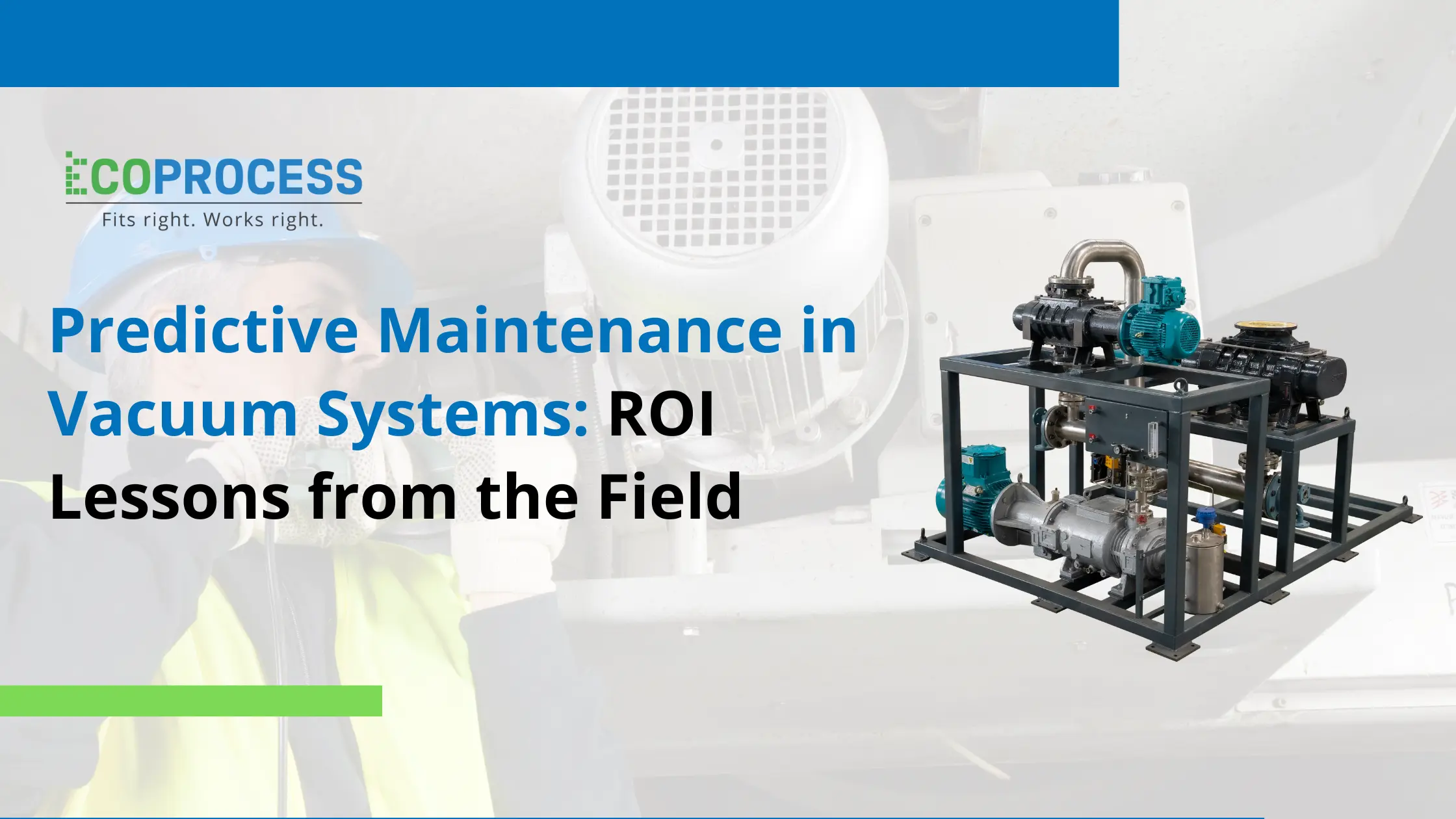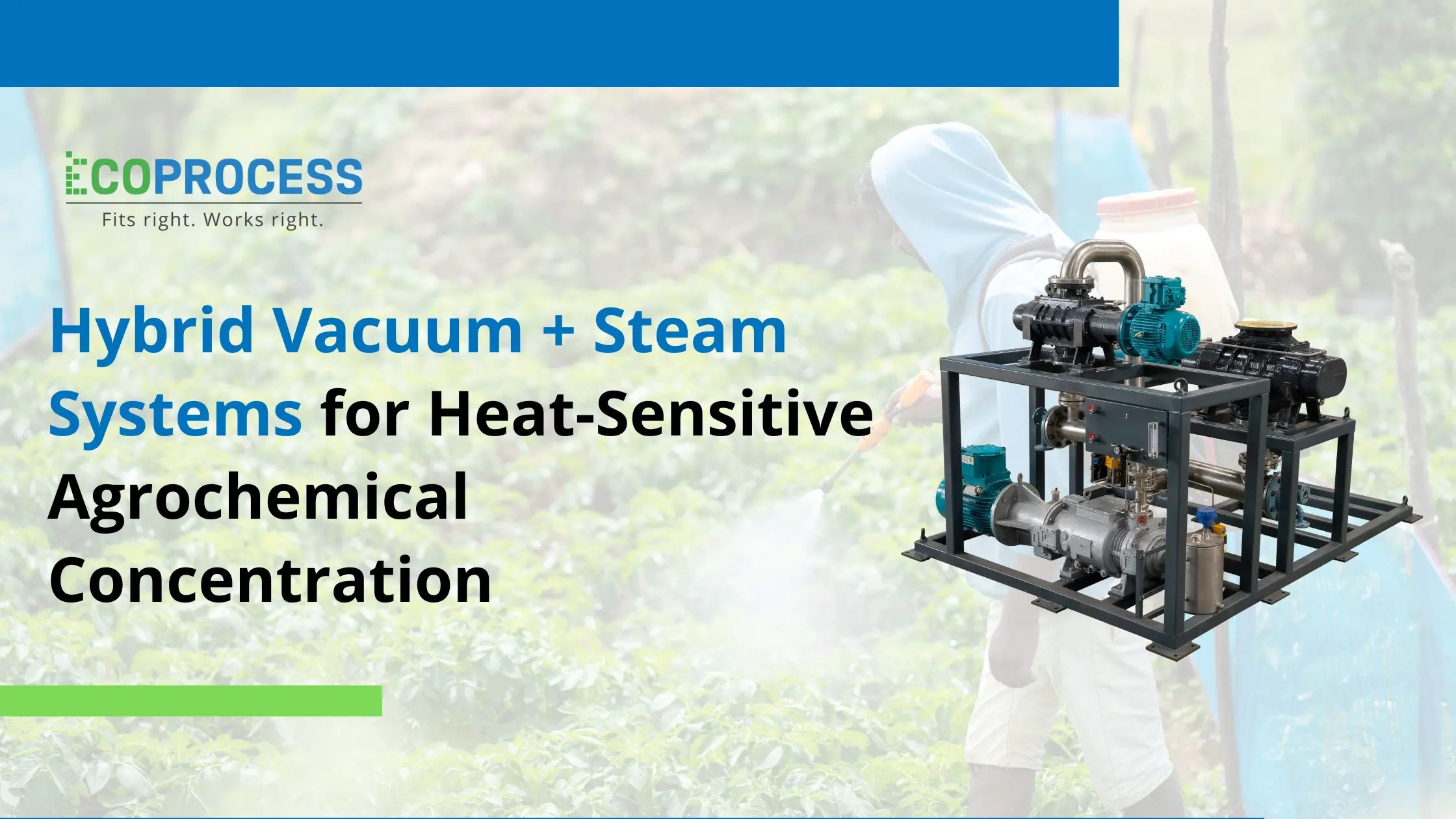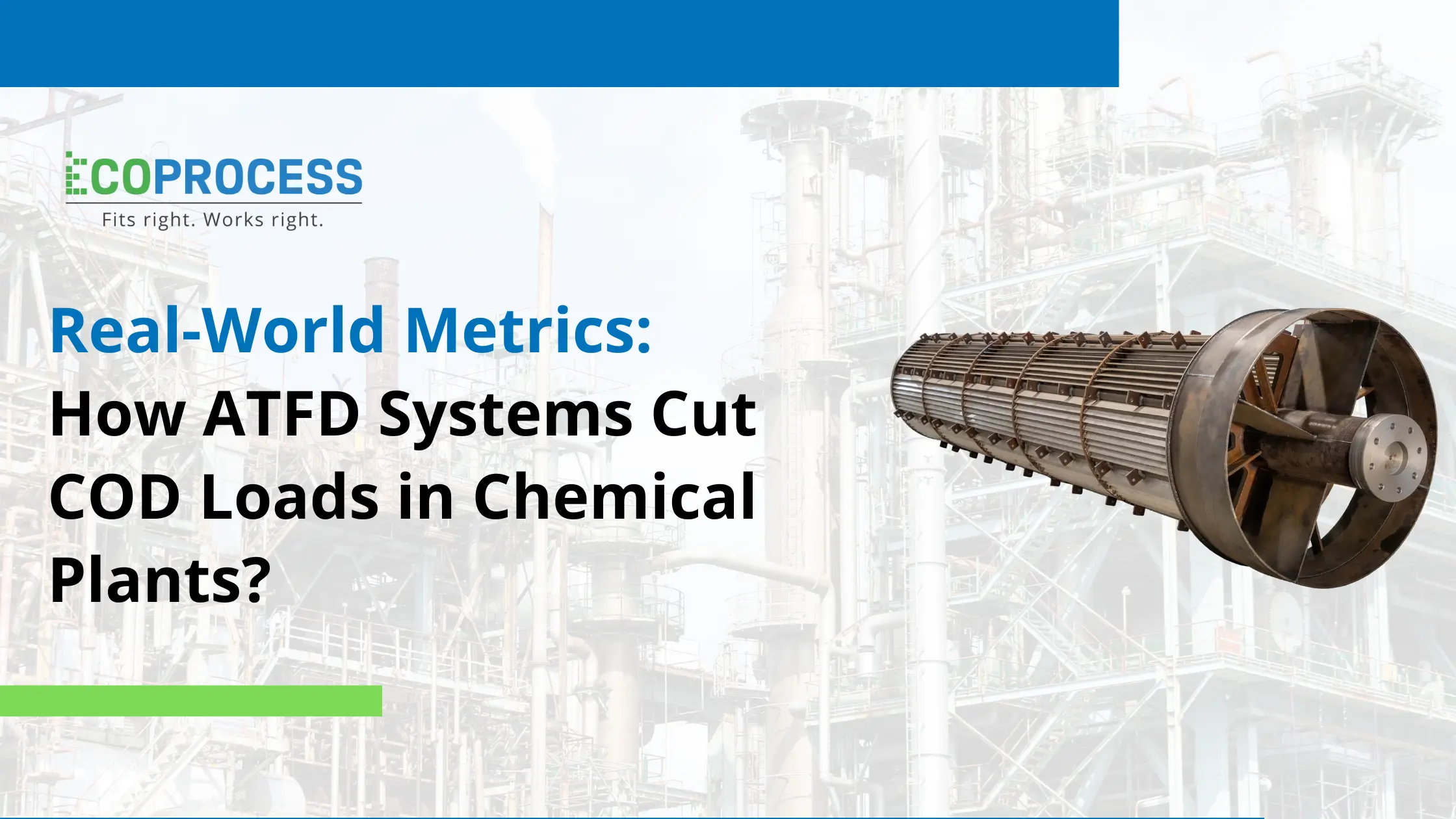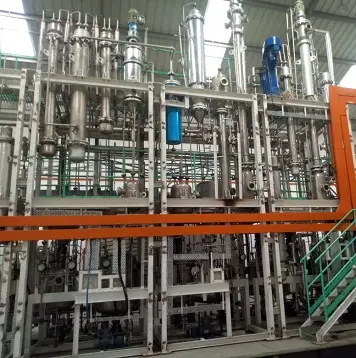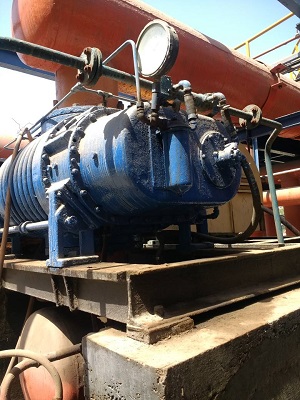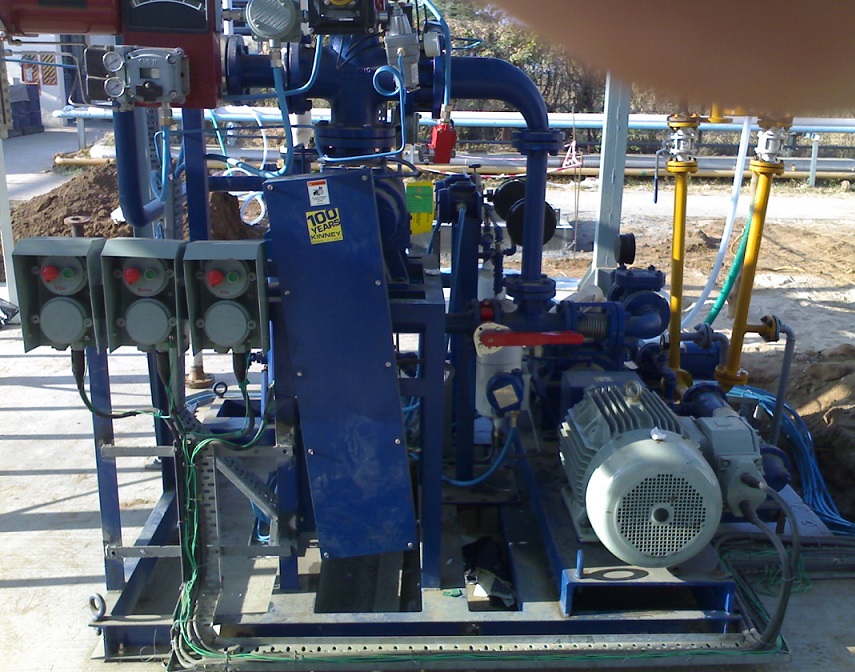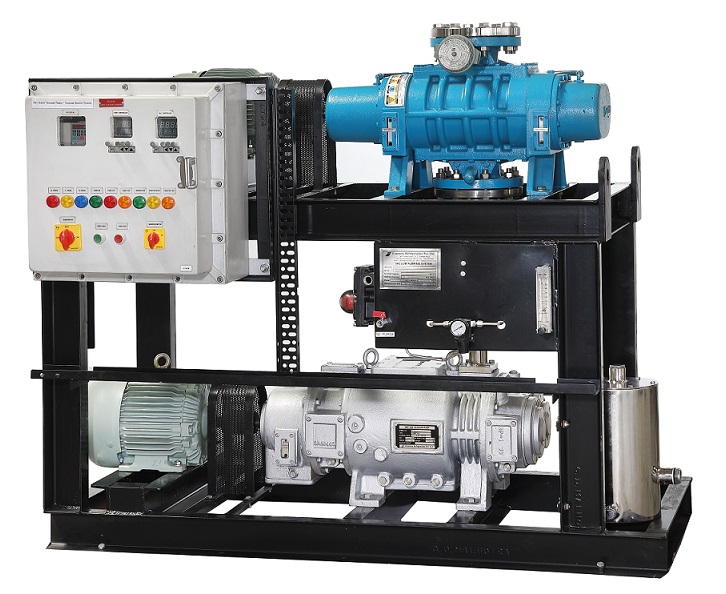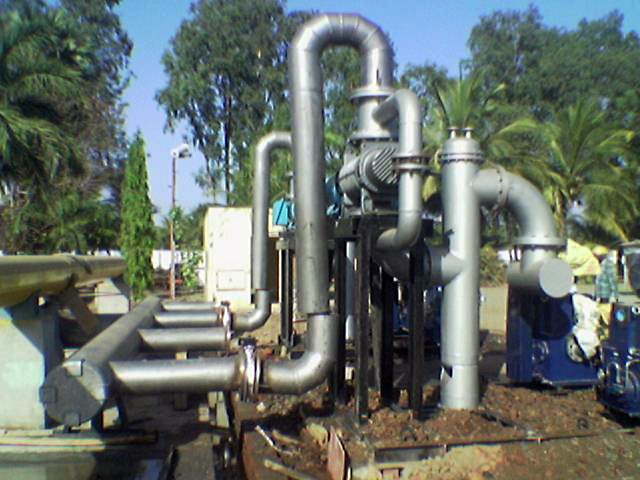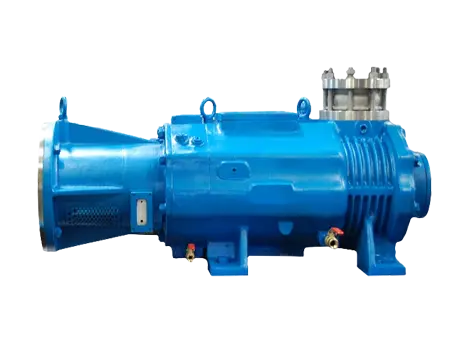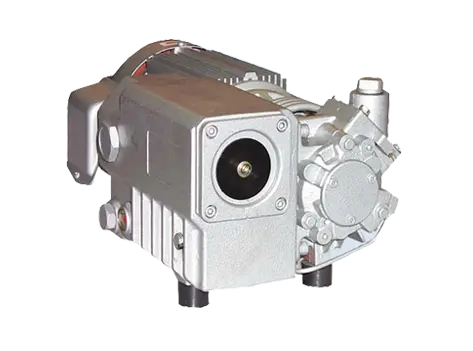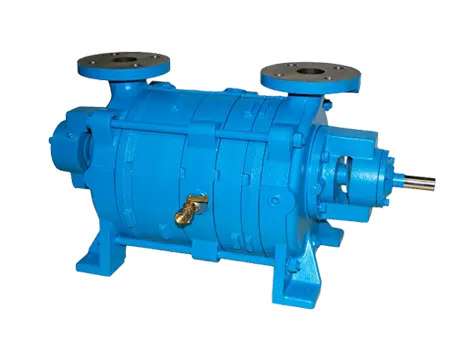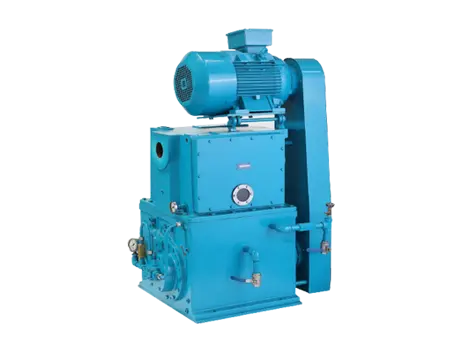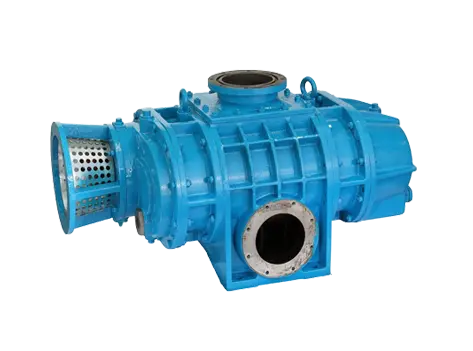
Liquid Ring Vacuum Pumps in Petrochemical Refining: Key Advantages
Liquid ring vacuum pump systems deliver reliable suction across various refining steps in petrochemical process applications. They properly handle condensable process vapours without risk of damage or system failure over extended use. Low sound levels help reduce workplace noise hazards and support safer plant floor environments daily. They operate without oil-sealed systems, so product streams remain pure throughout continuous refinement cycles. They drive critical vacuum requirements in each oil processing stage.
How Does It Fit Your Refining Needs?
Vacuum pumps in oil & gas refining ensure smooth distillation and evaporation of key chemical streams. They keep your process moving steadily by removing unwanted vapours at each stage. This steady vacuum helps maintain pressure balance for separation columns. Better vapour removal means fewer interruptions in your operations and consistent product quality output.
1. Precise Low-Pressure Control
This pump allows precise control of pressure levels to support efficient selective separation of hydrocarbons. It reduces reflux demand while significantly cutting energy needed for condensation in the next operation stage. This precision ensures minimal yield loss and consistent product composition at high industrial petrochemical throughput.
2. Efficient Vapor Management
The liquid ring vacuum pump design supports sealing condensable vapours within its liquid film chamber. It prevents vapour locking by maintaining liquid volume within rotor cells at all times. This approach smooths vapour flows and protects downstream equipment from severe liquid slug damage.
3. Simplified Maintenance Workflows
Liquid ring vacuum pumps feature a few moving parts for fast inspection and simple repair. Routine checks require minimal downtime because operators can access critical seals and essential bearings smoothly. This simplicity lowers overall service costs and improves plant uptime over extended operational cycles.
4. Stable Performance Under Stress
These pumps maintain steady vacuum levels even during demanding and extreme process load variations. Sealed liquid inside the rotor reduces the risk of particle ingress, which can cause unexpected performance loss. Stable vacuum output improves consistency in downstream reaction steps for better product quality.
5. Smooth Start and Stop Actions
Liquid ring vacuum pumps start and stop gently to avoid pressure shock in piping networks. Gradual changes in vacuum level protect sensitive critical equipment such as columns and distillation trays. This feature boosts the lifetime of connected apparatus and cuts unscheduled operational downtime costs.
What Does It Do Under the Hood for You?
Technical benefits of liquid ring vacuum pump installations boost reliability while lowering overall operational burdens. These features bring steady results when you need constant vacuum support. Each benefit aligns with maintaining safe and dependable plant operations every day.
-
Quiet Operation: Liquid ring vacuum pumps run with low noise levels thanks to continuous liquid cushioning around rotor blades. Lower noise contributes to safer and more comfortable workplace conditions for operators near processing units.
-
Wide Temperature Tolerance: These pumps tolerate wide temperature swings in vapour and liquid phases without severe structural damage. Temperature limits exceed many designs, reducing the risk of unscheduled stops for temperature-related costly faults. Temperature resilience aids consistent suction across cold and hot process zones.
-
Self-Sealing Liquid Barrier: A liquid ring forms a barrier, preventing gas leaks and avoiding the need for complex seals. This natural sealing method limits shaft seal wear and lowers the chance of costly repairs.
-
Low Vibration Stress: Balanced rotor designs and liquid support absorb vibrations for smooth and steady pump operation under load. Vibration reduction protects bearings, improving the service life of rotating mechanical components over time. Lower vibration decreases the chance of alignment issues in connected piping assemblies.
-
Heat Recovery Flexibility: Discharged liquids carry heat energy that can be returned to process heating systems for reuse. Heat recovery options lower fuel use in boilers, cutting annual operational expenses across refining operations.
Where Will You Use This Pump in Your Plant?
Liquid ring vacuum pump applications extend through many refining processes in oil and gas facilities. Each use case shows real value in typical refinery steps. Consider these common spots to maximize your pump's benefits daily.
Distillation Column Support
Liquid ring vacuum pumps pull vapour from the top of crude distillation columns under low pressure. This vacuum boost improves the critical separation efficiency of light ends in the first column stages.
Deep Vacuum Towers
Pump systems maintain high vacuum levels in vacuum distillation units for effective heavy residue fractionation. Liquid ring design industrially handles vapour loads from thermal cracking and catalytic conversion processes.
Feedwater Deaeration
Vacuum pumps strip dissolved gases from boiler feedwater, lowering serious corrosion risks in steam systems. Cleaner feedwater extends equipment life and significantly reduces chemical treatment costs over the operating span.
Sulfur Recovery Gas Handling
Systems draw off acid gas streams in sulfur recovery units under controlled vacuum conditions. This effectively aids in the removal of hydrogen sulfide and ammonia vapours before downstream catalytic steps.
Reactor Vapor Capture
Units capturing reactors off-gases use liquid ring pumps to maintain safe, low pressure during reactions. This prevents overpressure and routes vapours to treatment systems without the risk of significant leak hazards.
Evaporator Level Control
Pumps create a vacuum under evaporator units to lower boiling points while precisely regulating liquid concentration. Tighter level control improves evaporator yield and prevents carryover of undesirable heavy boiler salts.
How It Saves You Money Daily?
Choosing liquid ring vacuum pumps delivers significant long-term economic advantages in petrochemical refining operations. These cost savings quickly free up budgets for other critical plant improvements. You gain reliable performance and lower expenses combined.
Lower Power Consumption
Under similar loads, liquid ring vacuum pumps need lower drive power than dry vacuum designs. Reduced energy use cuts electricity bills and lowers carbon output in petrochemical facilities.
Minimized Spare Part Expenses
These pumps feature few wearing components, so operators need to stock fewer spare parts on site. Lower inventory savings free capital for strategic growth projects within refining divisions. This budget relief supports other plant upgrades and safety improvements.
Lower Downtime Losses
Fast startup and shutdown operations frequently reduce the idle time between process batches in refining units. Simplified troubleshooting and service cut unplanned stops, boosting valuable annual production hours. Higher plant uptime also reduces lost revenue in volatile oil market environments.
Low Installation Costs
These pumps need minimal foundation work because of their compact design and reduced weight. Lower civil work expenses and fewer anchors cut installation budgets significantly. Shorter setup time helps start production faster after scheduled maintenance periods.
Extended Equipment Lifespans
Robust materials and simple mechanics resist wear for longer equipment service intervals in industrial plants. Extended service intervals reduce replacement rates, cutting significant long-term capital outlays. This reliability drives lower asset costs per production unit over the expected pump lifetime.
Call to Action
Review the pump selection guide to match liquid ring vacuum pump requirements with refinery process demands; contact for sizing advice to maintain uptime and safe operation in oil and gas refining workflows. Our team responds quickly to meet project timelines. Get connected today for quotes aligned with budget and technical specifications.
FAQs
Why are liquid ring pumps used in refining?
They deliver reliable low-pressure for distillation and evaporation steps. They handle condensable vapours without damage and maintain seal integrity while requiring minimal maintenance and lower noise emissions.
Are they suitable for wet gases?
Yes. Liquid ring pumps use liquid seals that absorb moisture and entrained droplets, making them perfect for wet gas streams. They prevent vapour locks and handle high vapour loads safely.
How do they handle explosive vapours?
They contain vapours within a liquid seal, preventing ignition sources from contacting flammable gas. Inert liquids absorb heat and dilute concentration until gas moves safely to treatment or flaring systems.
How do they improve process safety?
These pumps limit pressure surges and reduce vapour leaks by maintaining controlled vacuum levels. Liquid barriers contain process fluids and ensure the safe removal of hazardous gases under proper conditions.
